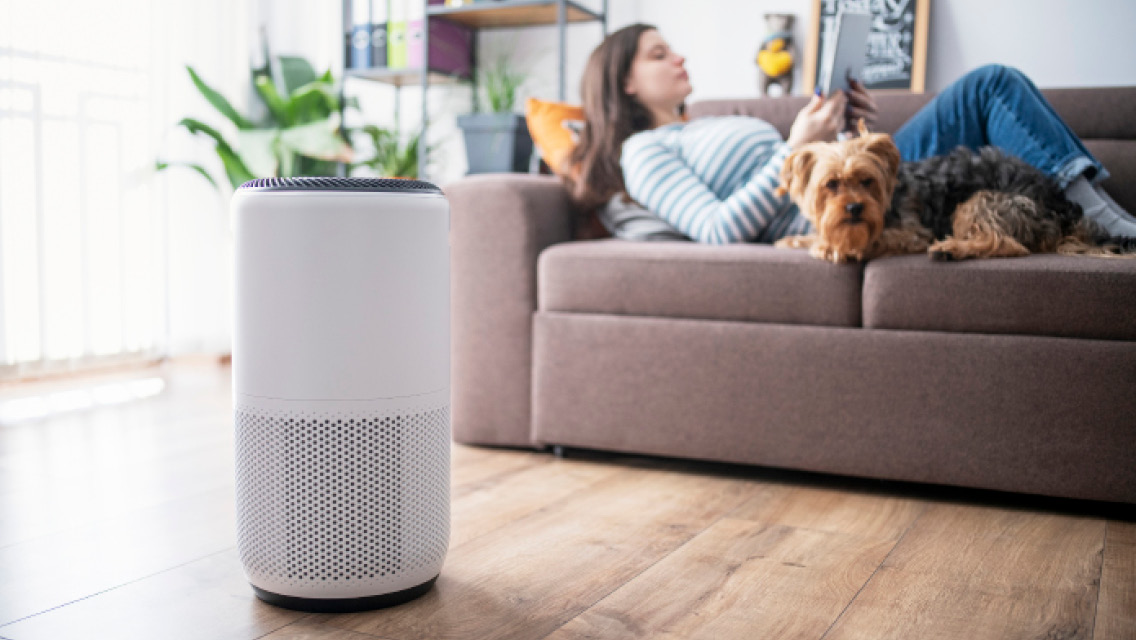“What do you smell when you first walk into your house?” asks Baker-Laporte. “Your house should smell pleasant. If it smells moldy or dusty or has a chemical smell, there’s a problem.”
A spate of studies indicate that indoor air is two to five times more polluted than outdoor air. In part, this is because our indoor air has become compromised by the synthetic chemicals in building materials and other products used in the home. Making matters worse is that, in response to the energy crisis of the 1970s, many buildings were sealed tightly to conserve energy, which also had the unintended effect of trapping toxins in our living environments.
1. Filter Out the Bad Stuff
The ideal defense, of course, would be to eliminate toxins altogether. But some degree of chemical exposure is inevitable. Daniel Stih, an environmental consultant, recommends taking a quick trip to your local hardware store: “I know this sounds like a no-brainer,” says Stih, author of Healthy Living Spaces: Top 10 Hazards Affecting Your Health, “but change the filter on your furnace. Find it, change it, and upgrade it to an allergy-reduction filter.” Stih explains that cheap filters protect the furnace only from dirt that could gum up the moving parts — not the air you’re breathing. HEPA (high-efficiency particulate air) filters, however, remove the tiny particles that can be especially toxic.
Also have air ducts and vents cleaned, but skip the unnecessary chemical sanitizer. For the bedroom, an air purifier with both charcoal and HEPA filters is a good investment.
2. Forgo Artificial Scent
Beware fragrances. Perfumed items such as air fresheners (particularly plug-in diffusers) and scented laundry soap are some of the chief compromising indoor air quality. Many products simply list “fragrance” as an ingredient, says Stih, and that term often includes chemicals such as formaldehyde and odorless fixatives that stabilize the chemical compound but also irritate the eyes and mucous membranes.
If you enjoy scents, Stih notes that organic, therapeutic-grade essential oils are a good alternative. Mix a few drops in a spray bottle with water, and voilà — a natural aerosol deodorant. (For more on the dangers of fragrances, see “Dryer Dangers”.)
3. Reduce Indoor Chemical Exposures
Paint is a common source of indoor air pollution. Choose a low-or zero-VOC paint certified by Green Seal to exclude certain heavy metals and toxic compounds. Or consider a paint derived from natural sources, such as milk paint.
Furniture made of particleboard or foam can off-gas chemicals for years. Opt instead for solid wood, and use bedding made of organic cotton.
Check your basement for radon, an odorless radioactive gas that can seep from the ground into homes and also contaminate groundwater. This is especially true for folks in the heartland: Soil in the Midwest is high in uranium, which eventually breaks down to form radon.
4. Air It Out
Outside air is one of the best things to improve the air quality of your home, says Baker-Laporte. So, unless you live by a freeway, open a window.
You can also try a little indoor gardening. Certain houseplants, such as English ivy, bamboo palm, and spider plants, can filter pollutants from the air. (Try these simple steps to clear the air inside your house at “11 Tips to Improve Indoor Air Quality“.)
This was excerpted from “Detox Your Home” which was published in the January/February 2014 issue of Experience Life magazine.



This Post Has 0 Comments